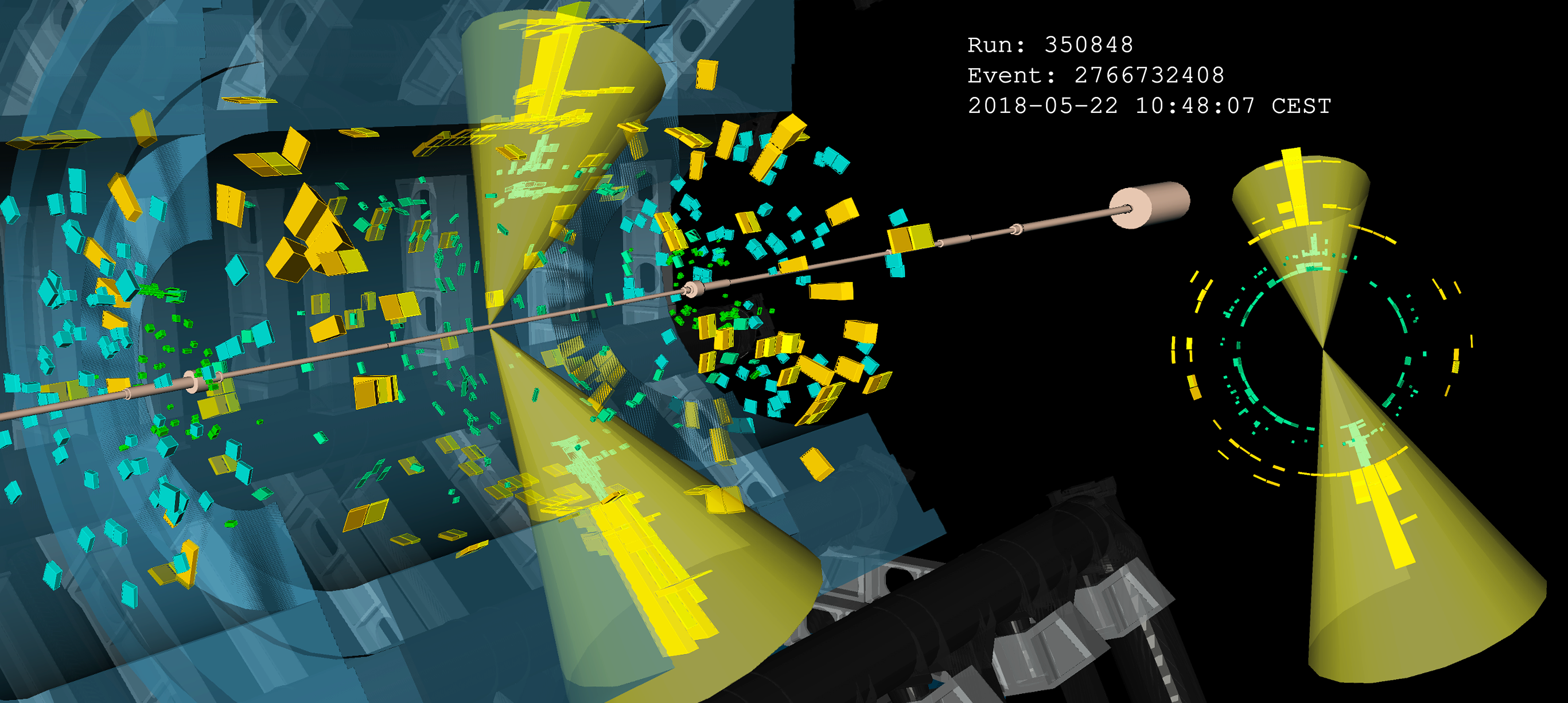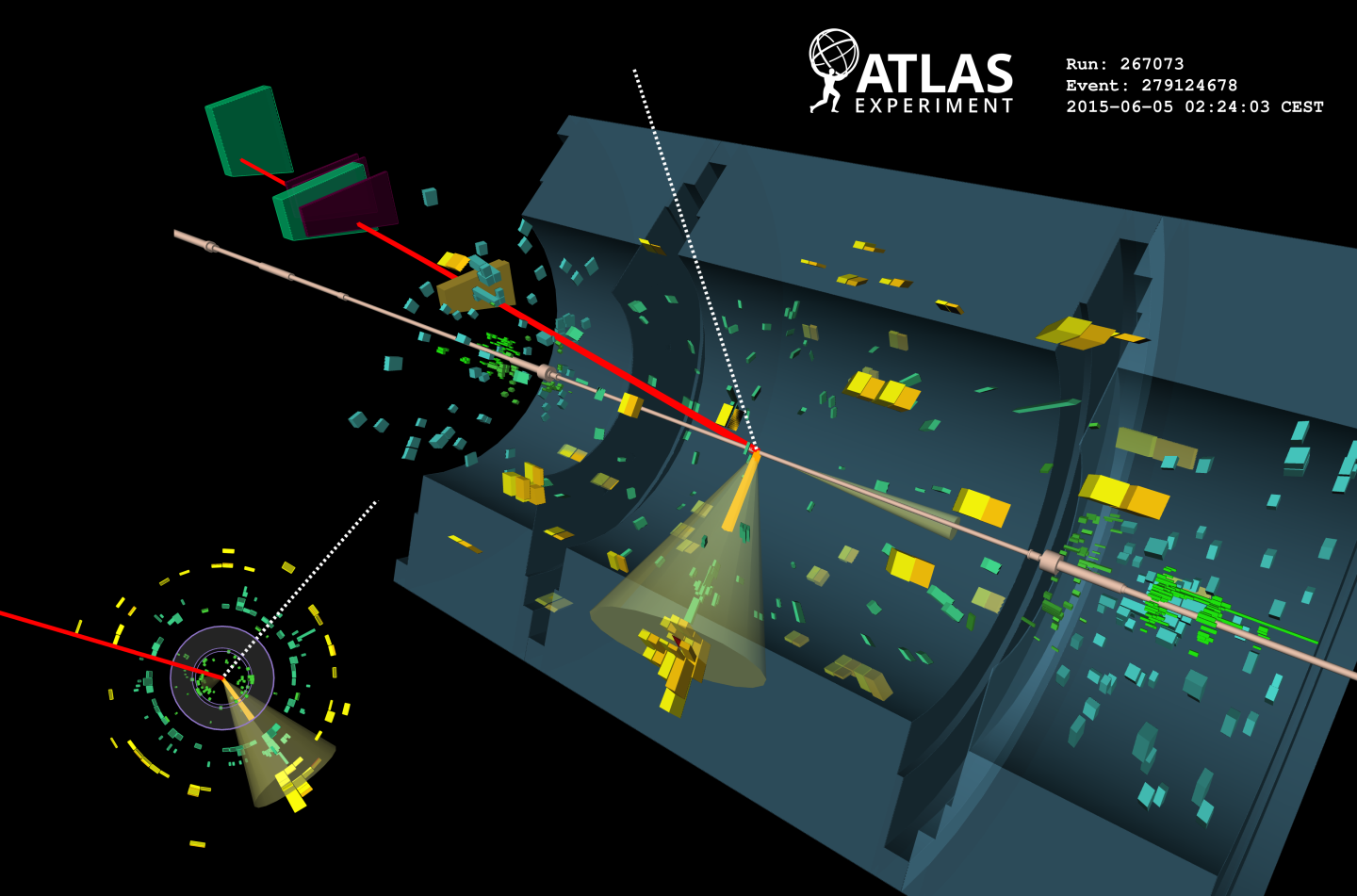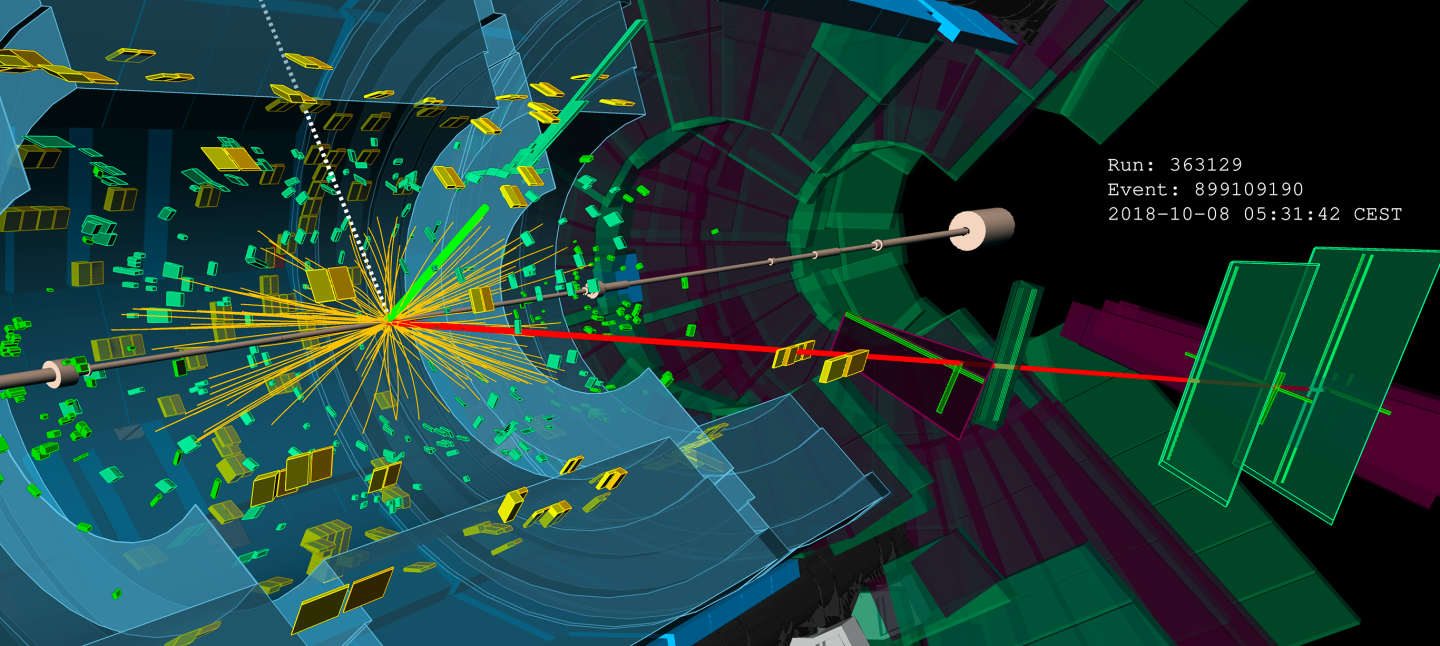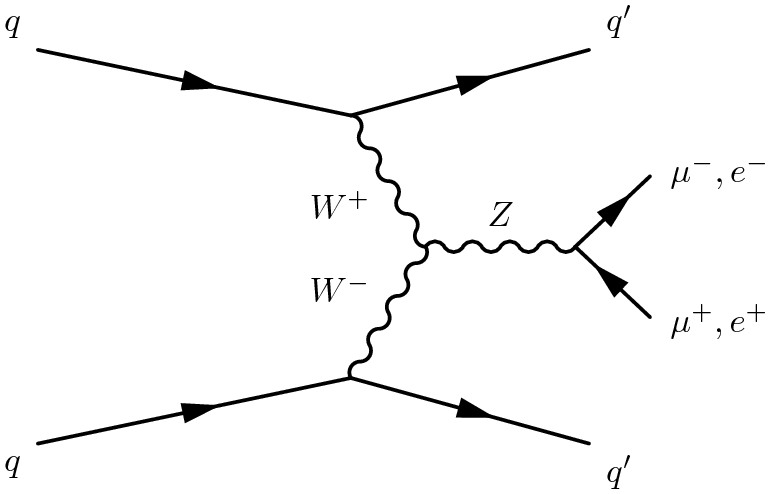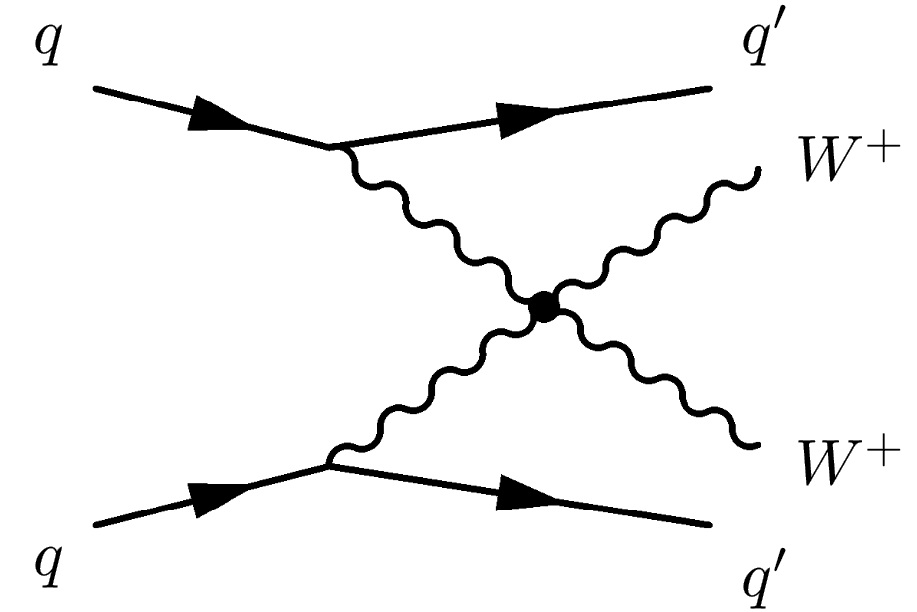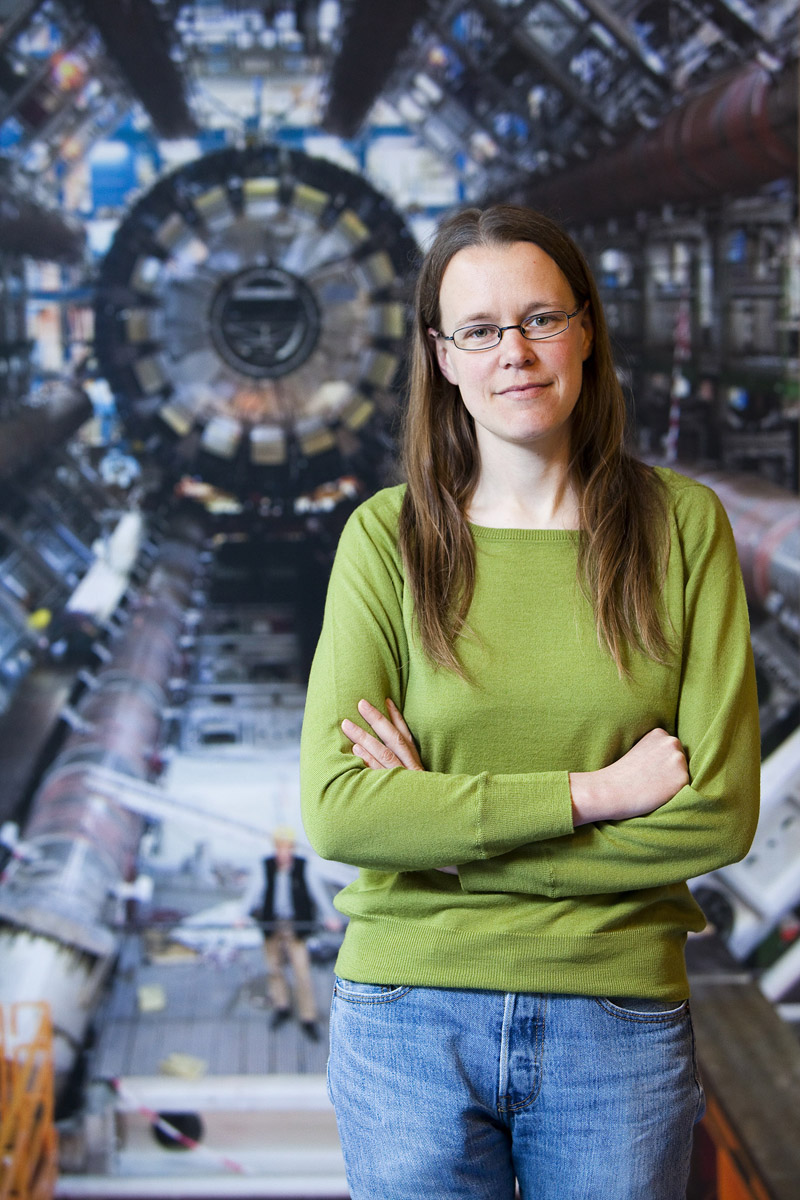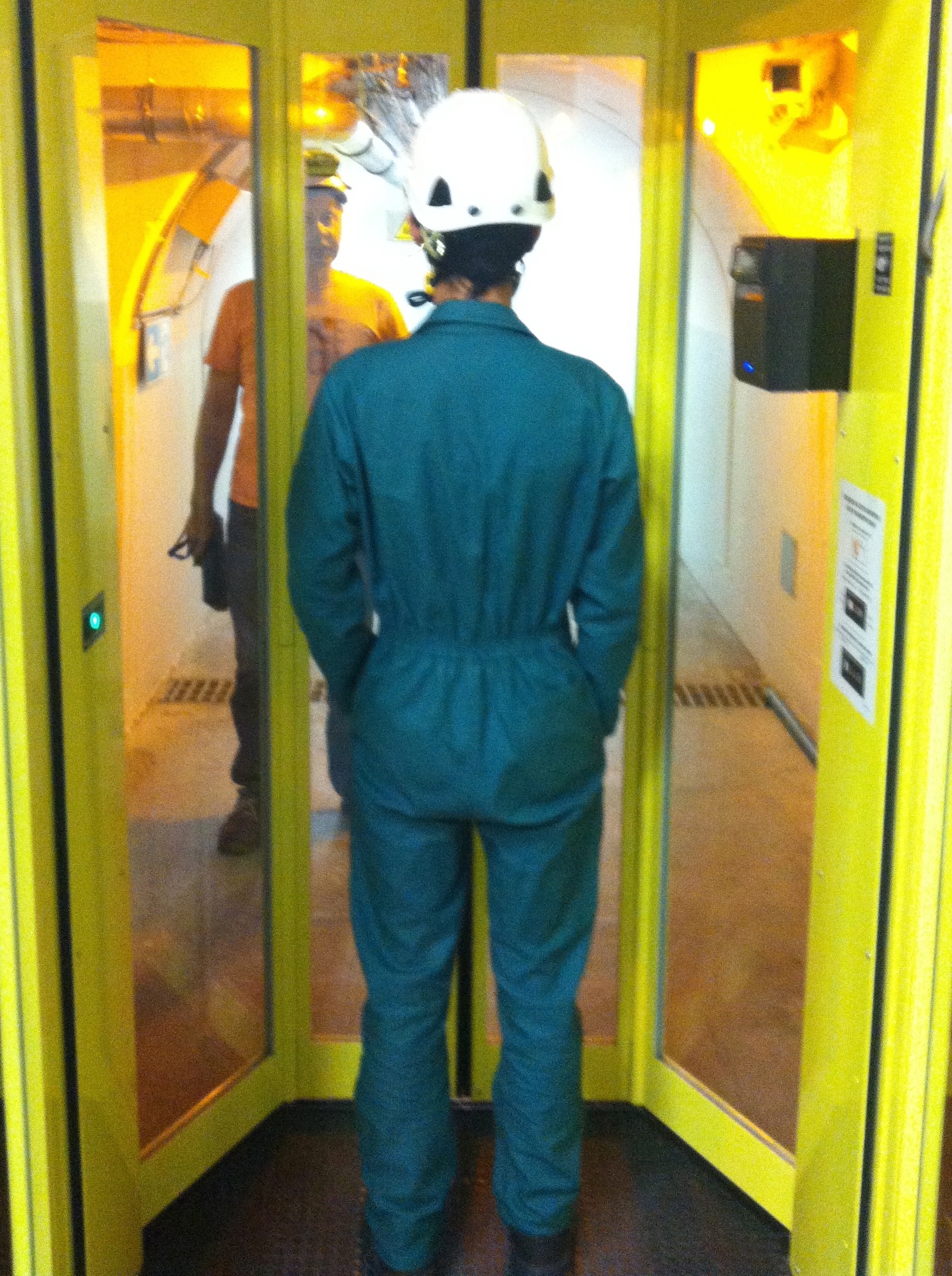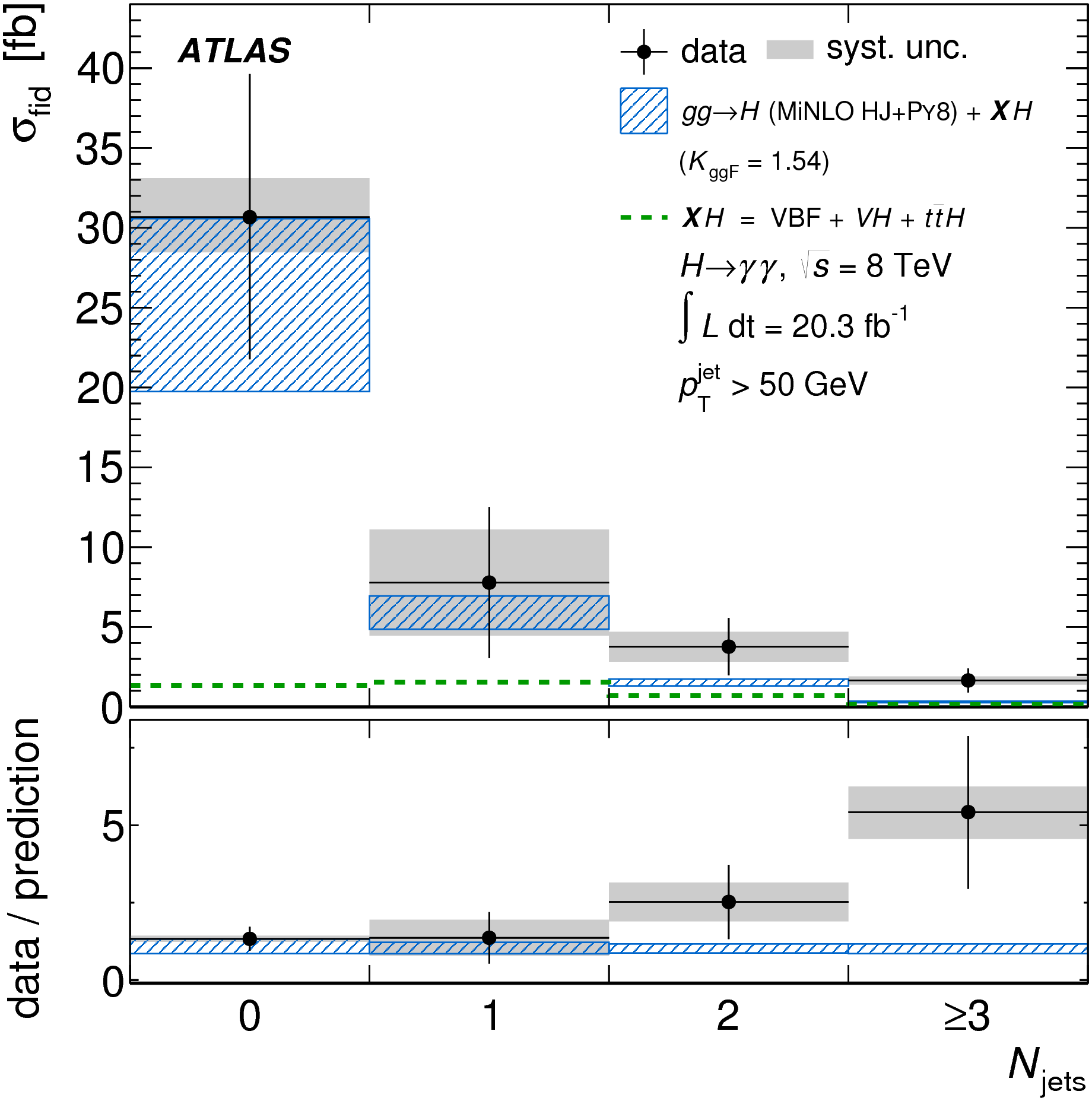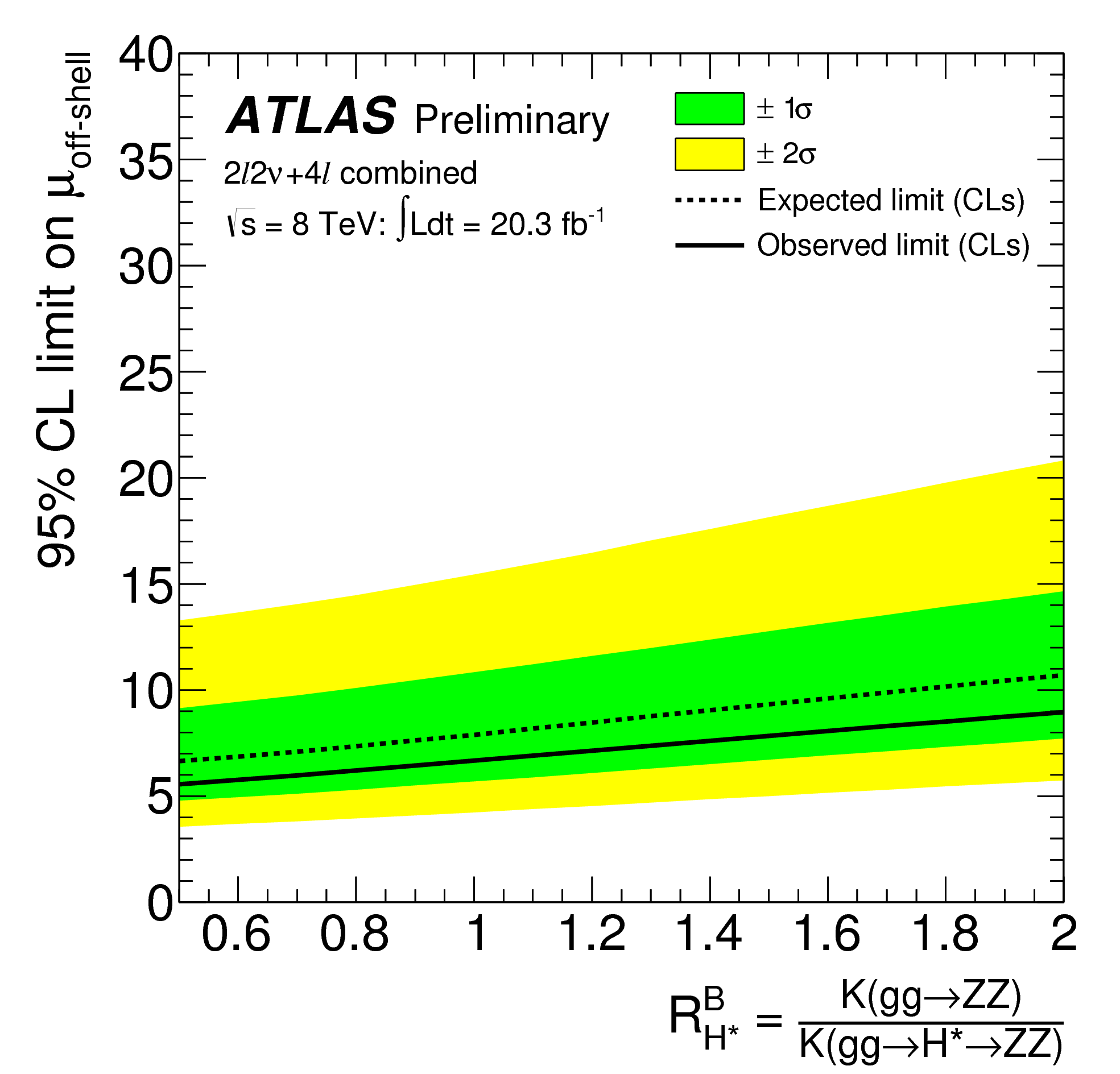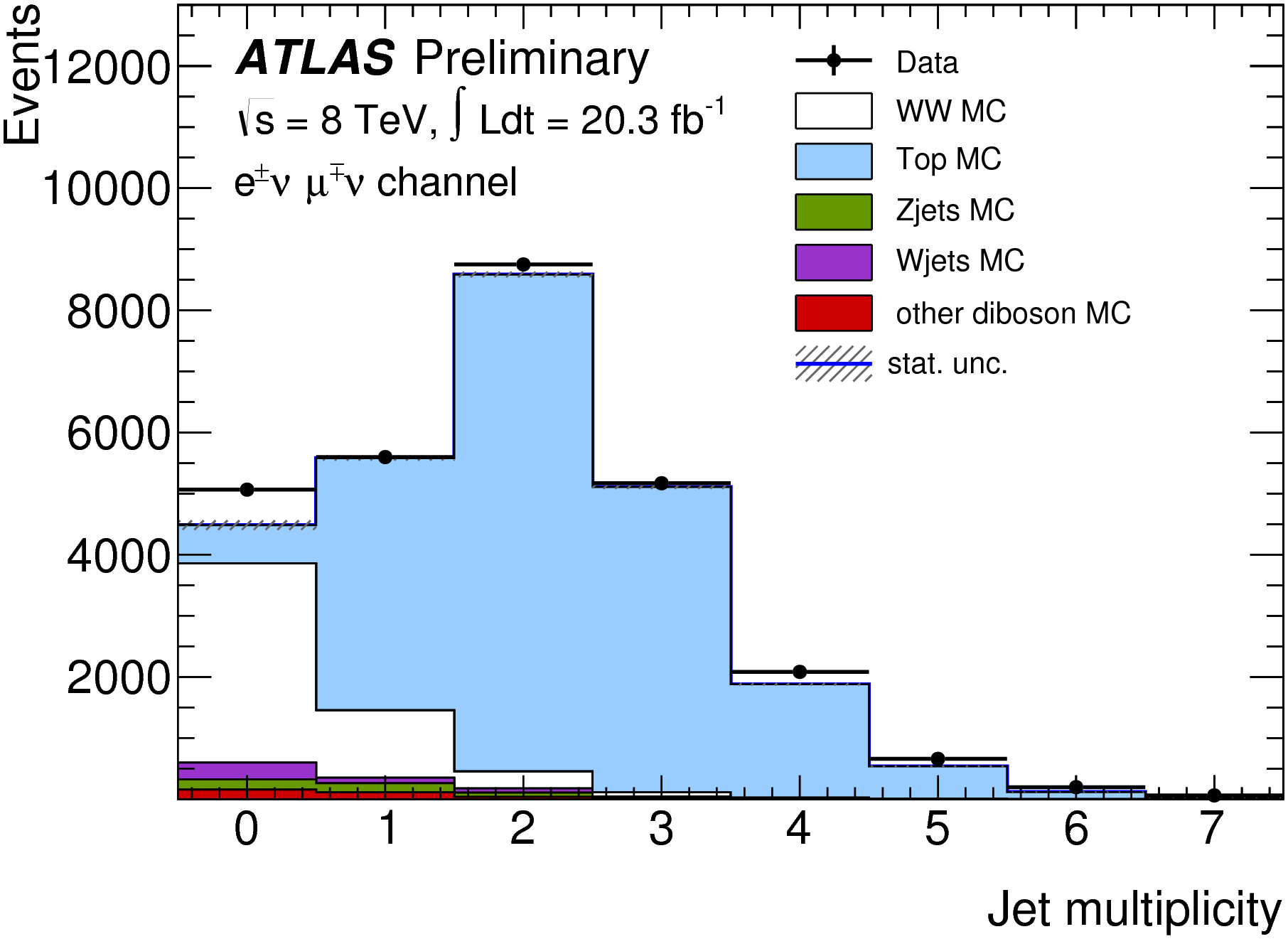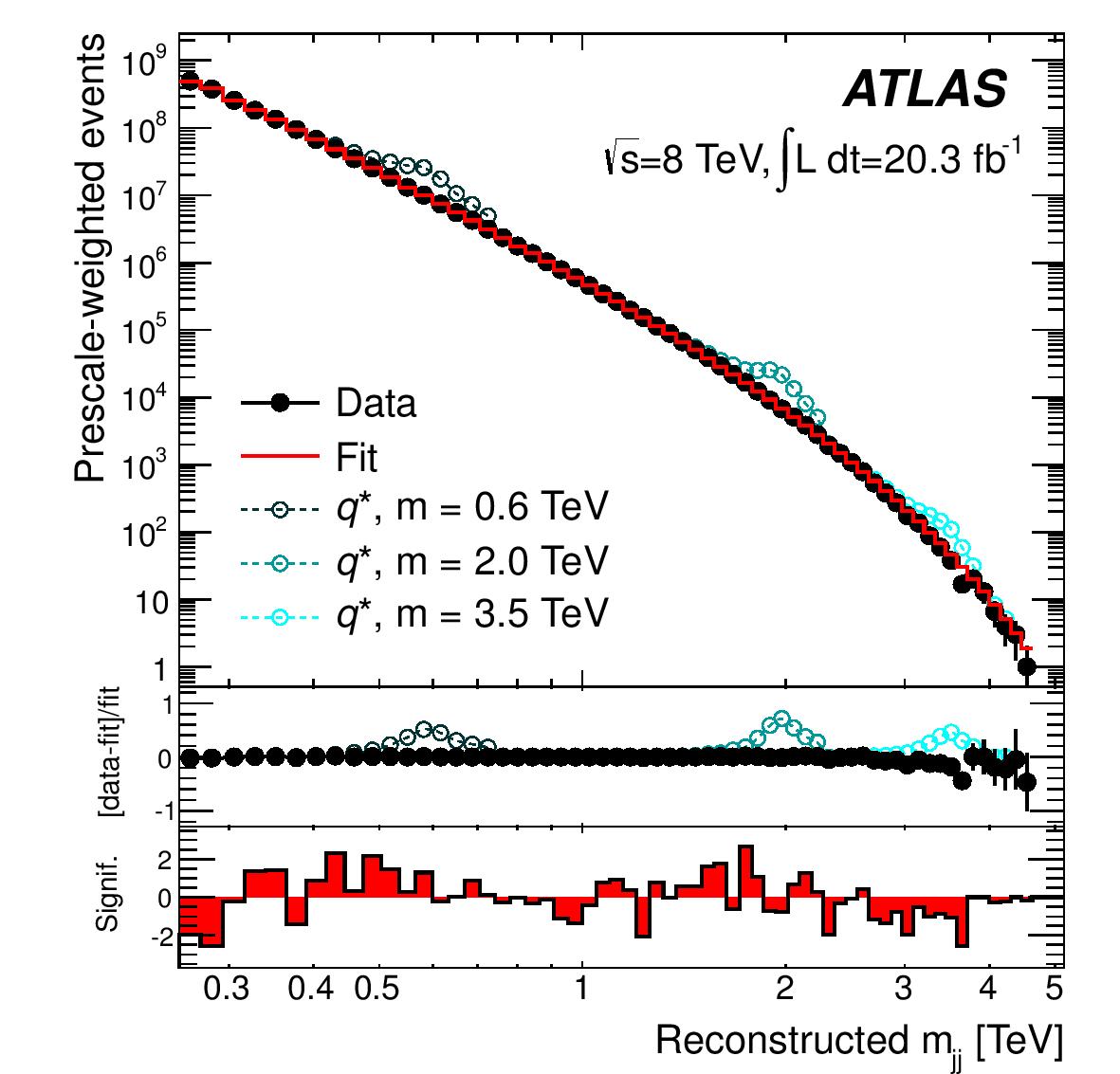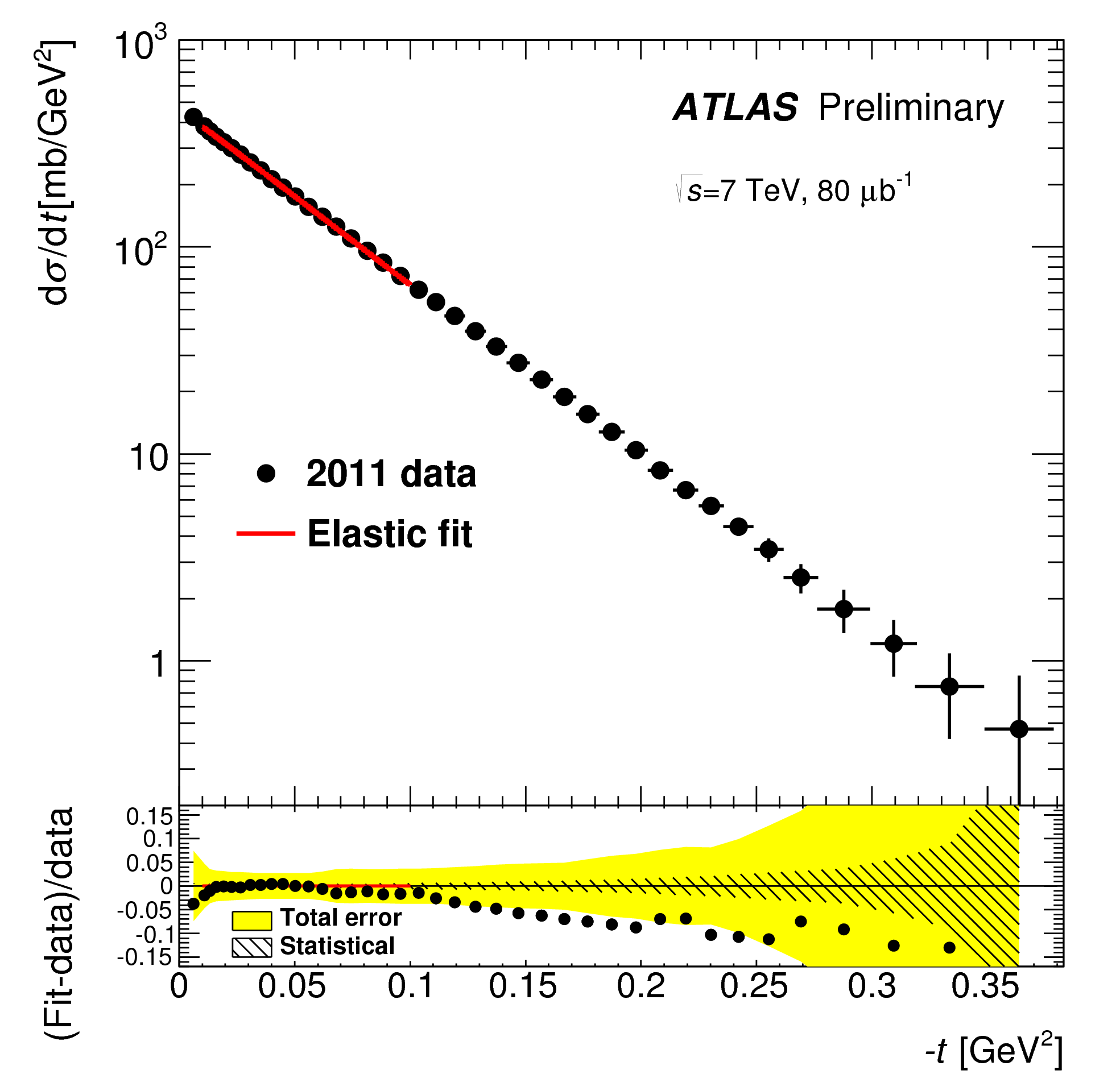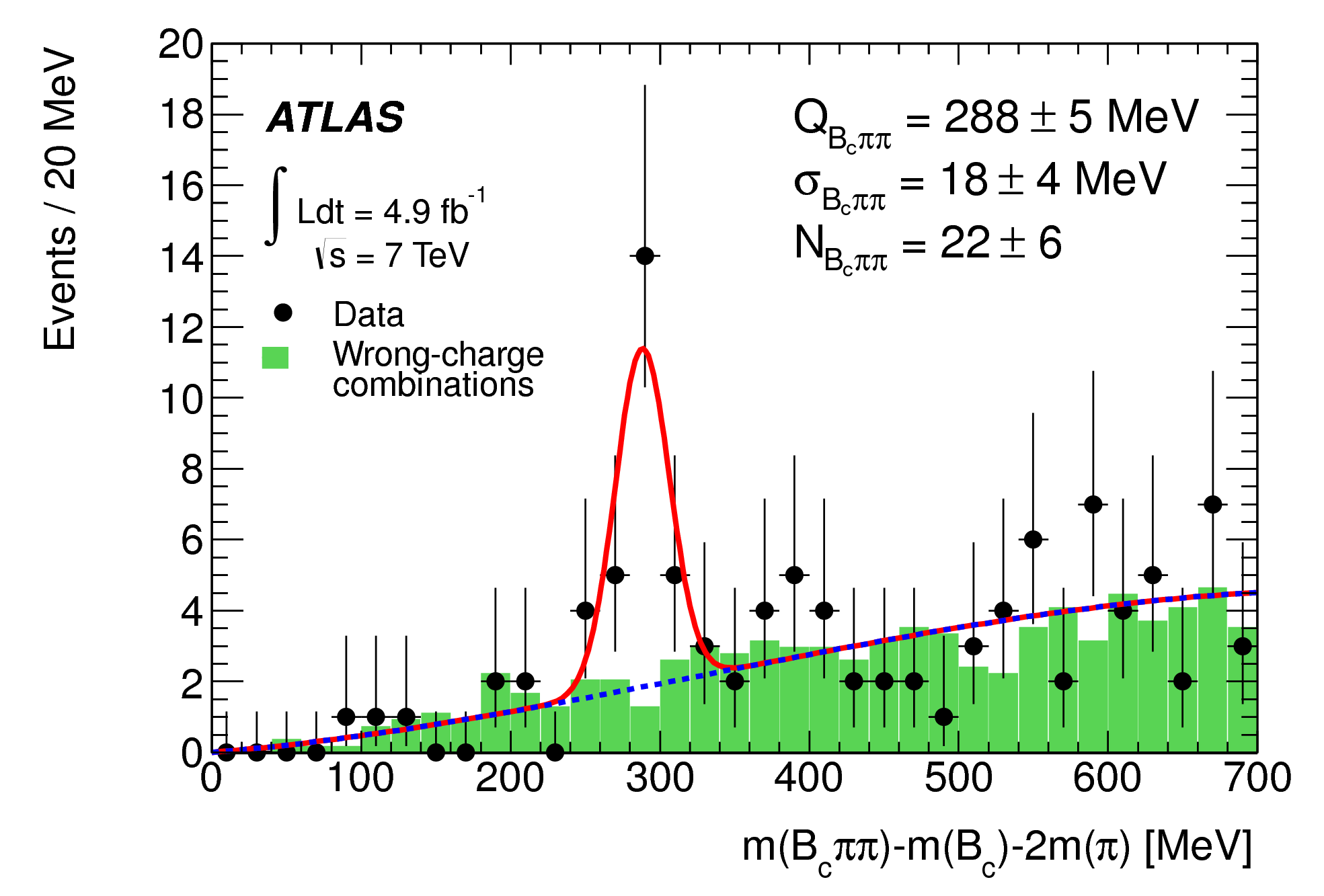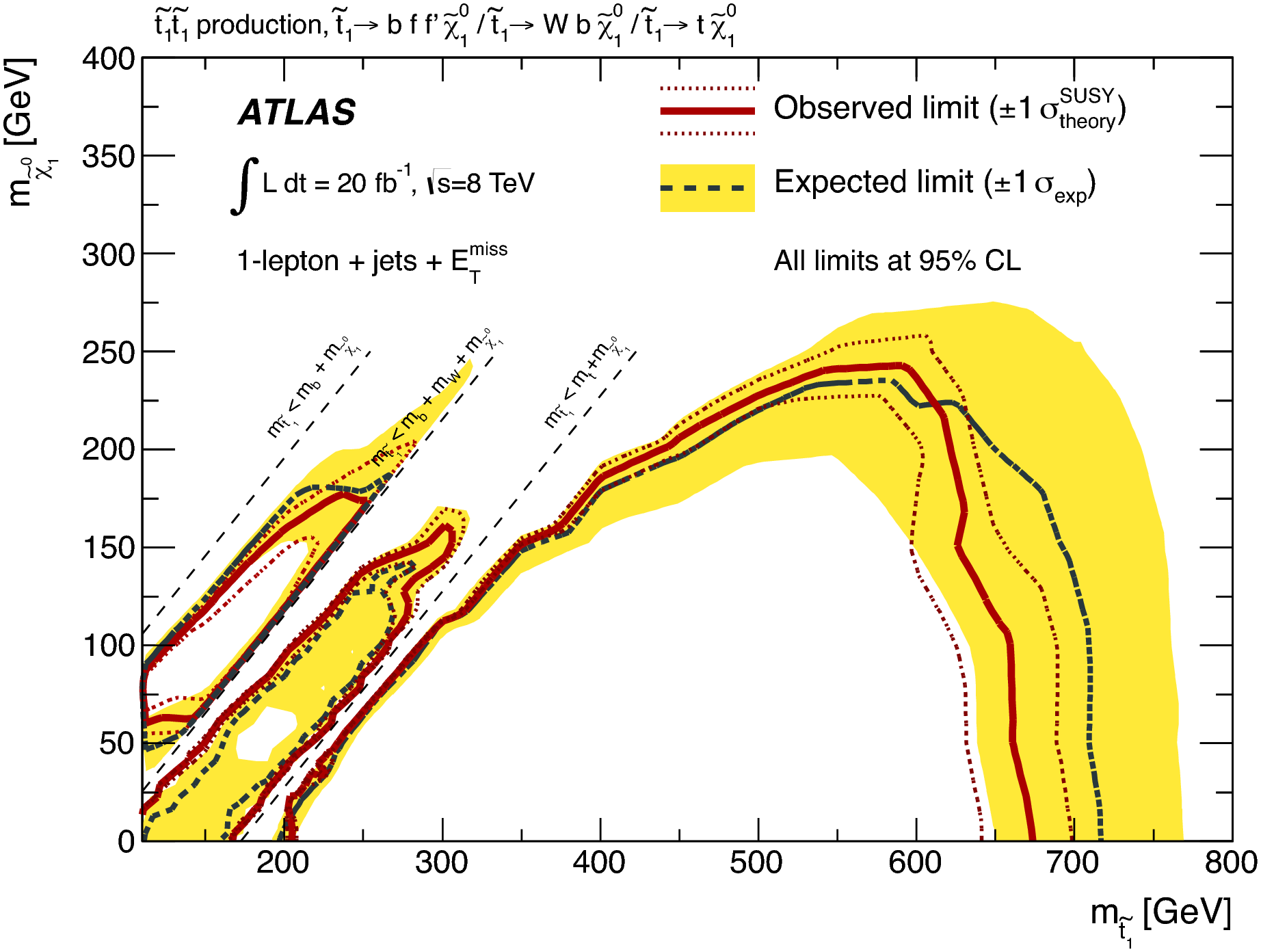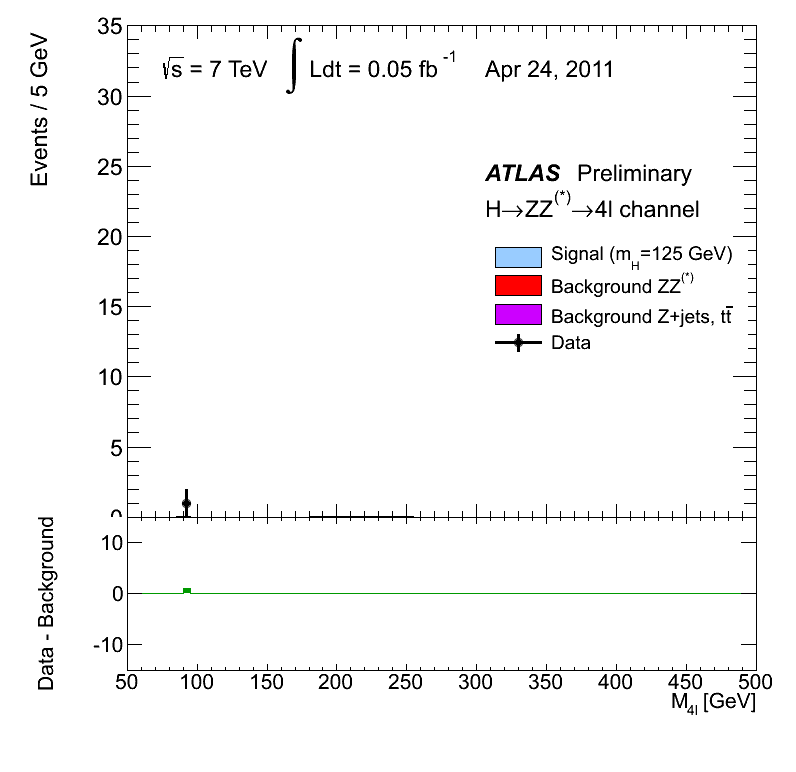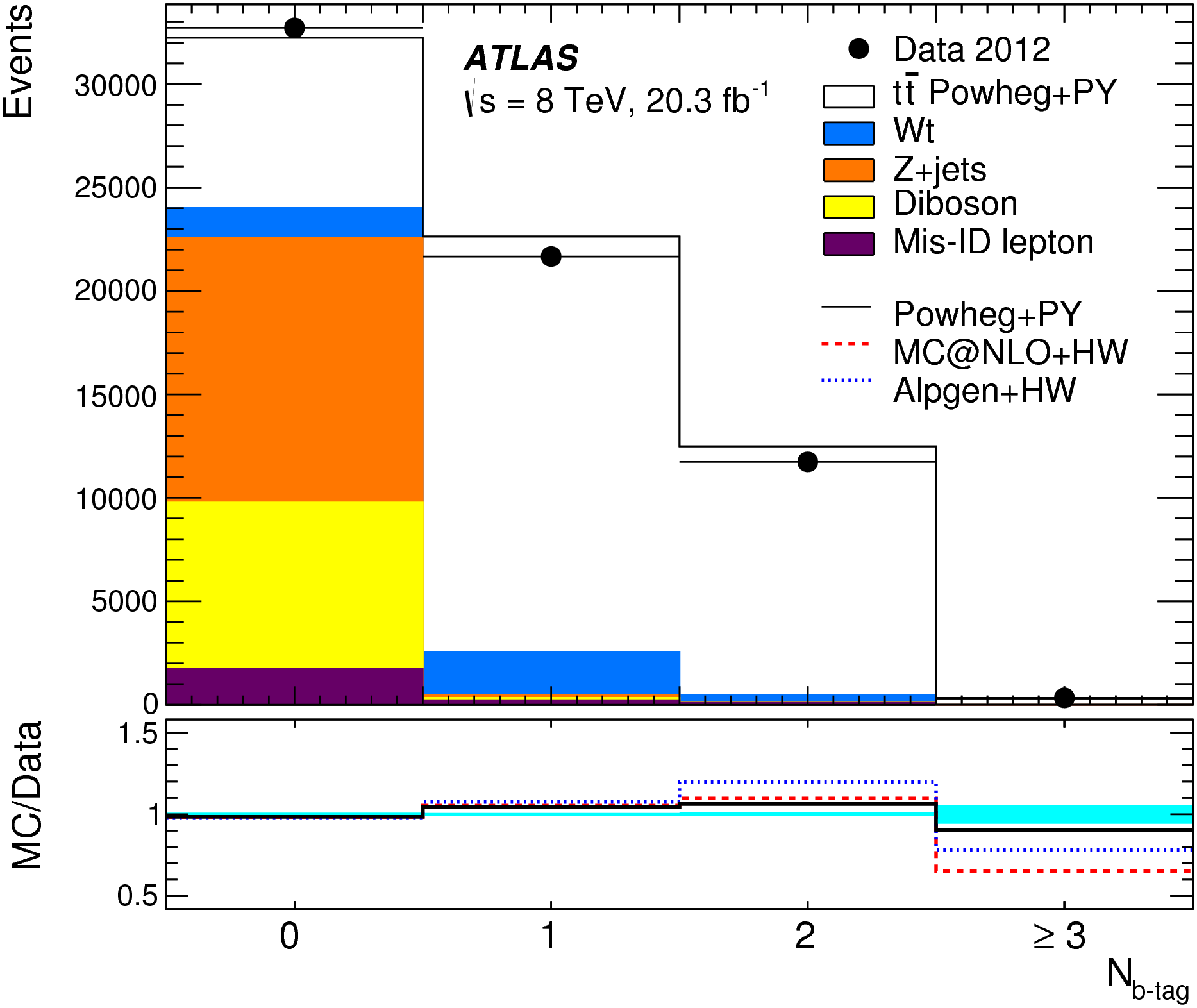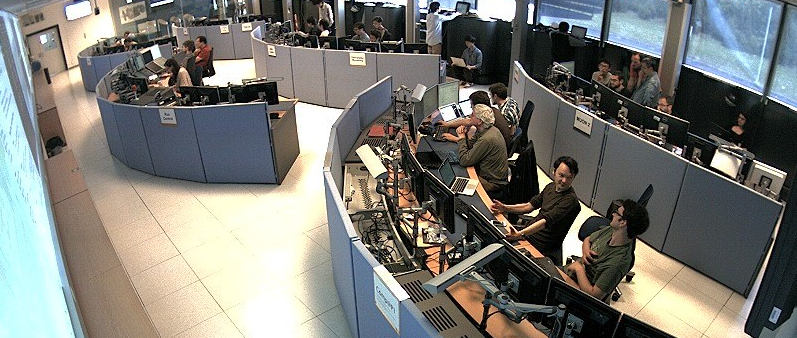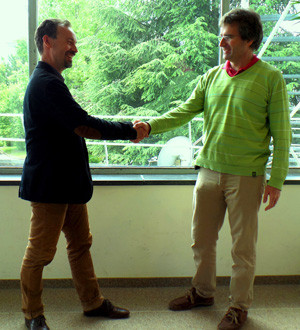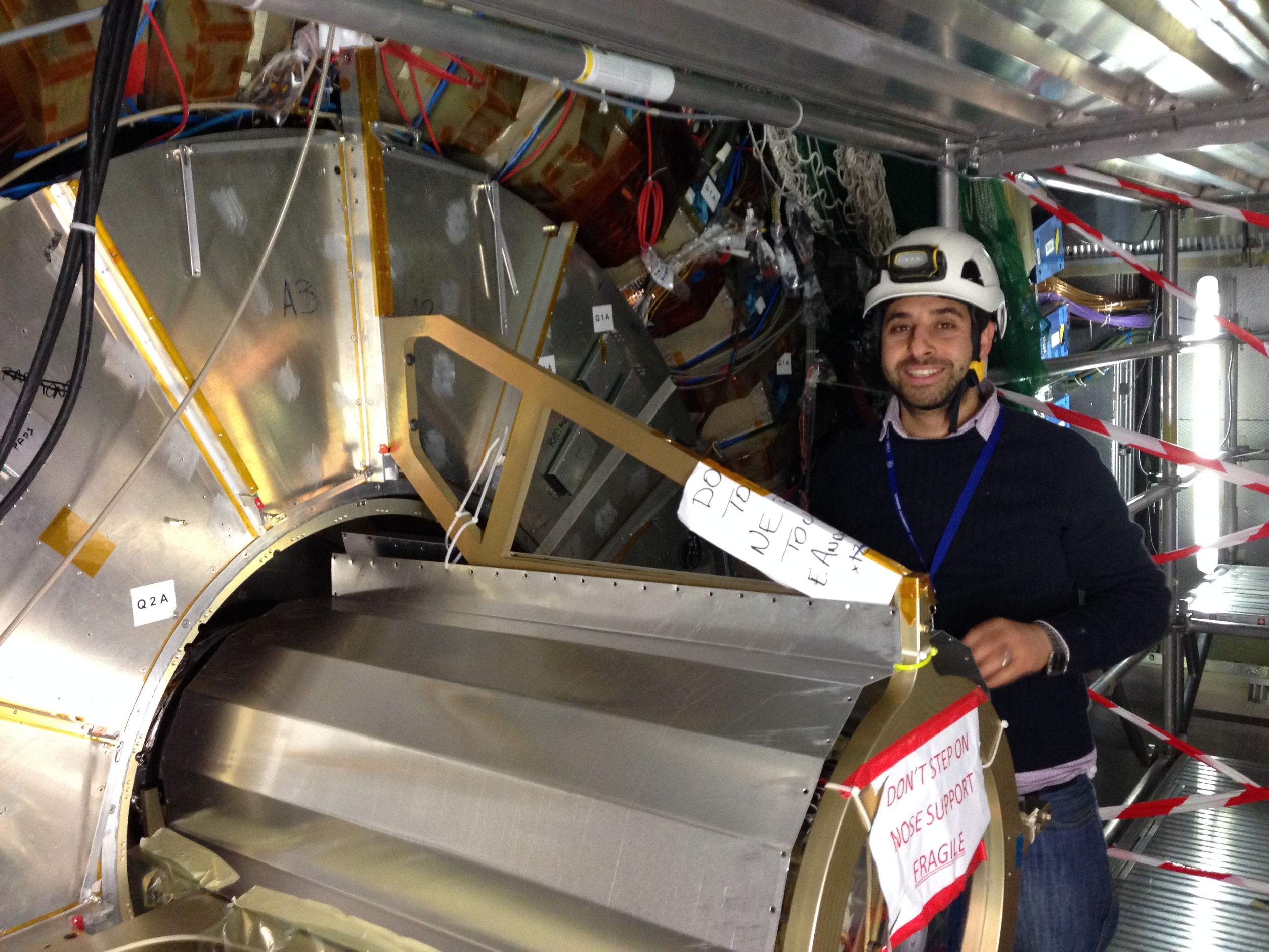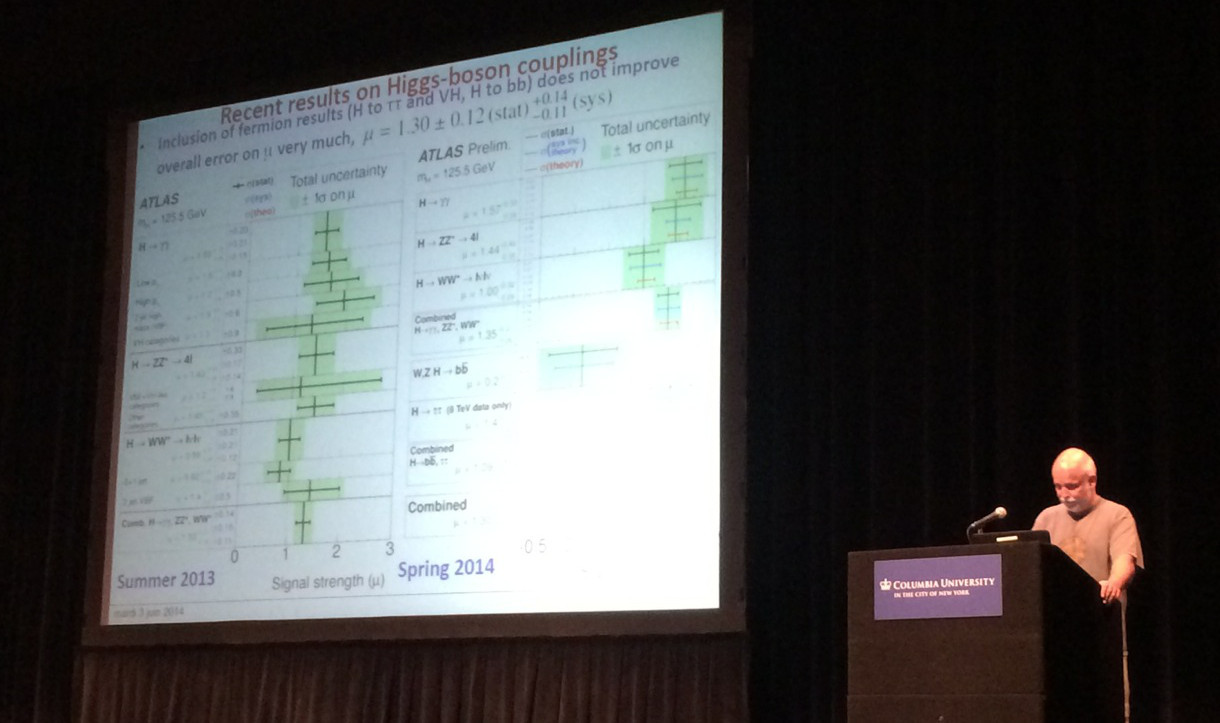First observation of Z-boson production via weak-boson fusion
The fusion of two weak bosons is an important process that can be used to probe the electroweak sector of the Standard Model. Measurements of Higgs production via weak-boson fusion are crucial for precise extraction of the Higgs-boson couplings and have the potential to help pin down the charge conjugation and parity of the Higgs boson. A similar process, weak-boson scattering, is sensitive to alternative electroweak symmetry-breaking models and to anomalous weak-boson gauge couplings. These processes are extremely rare and the experimental observation of the production of heavy bosons via weak-boson fusion has become possible only recently with the large centre-of-mass energy and luminosity provided by the LHC. Extracting the signals from the huge backgrounds in the high pile-up conditions at the LHC is a major challenge.
ATLAS finds evidence for the rare electroweak W±W± production
The Standard Model of particle physics has been extremely successful in predicting a vast variety of phenomena – so successful, that it is easy to forget that some of its predictions have not yet been verified. A very important one, related intimately to electroweak symmetry breaking, is that the gauge bosons (γ, W and Z) can interact with each other through quartic interactions.
ATLAS Physicist Wins Young Scientist Prize
For her contribution toward the discovery of the Higgs boson, Kerstin Tackmann was awarded the Young Scientist Prize in Particle Physics 2014 by the International Union of Pure and Applied Physics.
News |
Identity problems
An obligatory eye scan is required for all ATLAS underground personnel entering the experimental cavern. The iris recognition is performed by the IrisID iCAM7000. Its only point in life is to keep track of who enters and leaves the Zone. It sounds like a simple task for such an advanced technology, but -- like most things in the world of research -- it's never without some hiccups.
Blog |
Probing Higgs boson production properties
ATLAS has measured properties of events likely to contain a Higgs boson, in order to get a better understanding of the frequency and manner in which they are produced. The study specifically examines the fiducial and differential cross sections for Higgs bosons that decay into two photons or into two Z bosons, using proton-proton collisions recorded by ATLAS in 2012.
The Higgs boson’s shadow
ATLAS physicists have studied the “shadow” of the Higgs boson far above its mass peak in an analysis of the full sample of 8 TeV proton-proton collisions delivered by the LHC in 2012. The study involves Higgs boson decays into two Z bosons, which themselves decay into four charged leptons or two charged leptons plus two neutrinos. Among other interesting properties, it provides new insight into the lifetime, or natural width, of the Higgs boson.
The WW cross-section: a high flyer
The production of pairs of heavy bosons, such as two Z bosons, a Z and a W boson, or the more challenging pair of W bosons (WW), are processes that particle physicists are passionate about because they cover a rich spectrum of phenomena. The WW channel, in particular, represents a substantial experimental challenge. In the events considered for this measurement, each W boson decays into an electron or a muon plus a neutrino that remains undetected and is reconstructed through the presence of missing energy in the event.
Are quarks fundamental particles?
From decades of discoveries made at particle colliders, we know that protons are composed of quarks bound together by gluons. We also know that there are six kinds of quarks, each one with its associated antiparticle. But are quarks fundamental? ATLAS searched for signs that quarks may have substructure in its most recent data, collected from the LHC’s proton-proton collisions in 2012.
Counting collisions with ALFA
Data from a special run of the LHC using dedicated beam optics at 7 TeV have been analysed to measure the total cross-section of proton-proton collisions in ATLAS. Using the Absolute Luminosity For ATLAS (ALFA), a Roman Pot sub-detector located 240 metres from the collision point, ATLAS has determined the cross-section with unprecedented precision to be σtot (pp → X) = 95.4 ± 1.4 millibarn.
The production of W bosons in association with jets
The production of a W boson in association with “jets” of particles initiated by quarks or gluons (“W+jets” events) is an important signature to test quantum chromodynamics, the theory of strong interactions. A new measurement reported by ATLAS focuses on studying the properties of the jets in a large data sample of W+jets events.
A new state of beauty and charm
ATLAS has observed a particle state of mass and decay properties consistent with expectations for an excited state of the Bc meson. The discovery follows analysis of the full 7 TeV and 8 TeV proton-proton collision data sets from the LHC’s first run.
Hunting for the top squark
Second anniversary of the Higgs boson discovery!
It’s been two years since the ATLAS and CMS experiments at CERN jointly announced the discovery of a new boson consistent with the Higgs particle of the Standard Model. Since then, the Higgs boson has been intensely examined. We’ve measured its spin, its mass, its lifetime, and observed its decay into bosons and fermions. In the next run of the Large Hadron Collider, we hope to learn more about how it interacts with other particles and to make many more precise measurements of its properties. By doing, we hope to extend the limits of our current understanding of the fundamental components of nature, and to seek clues for discovery.
News |
Music of the "LHC"
The ATLAS & CMS experiments celebrate the second anniversary of the discovery of the Higgs boson. Here, are some images of the path from the LHC's startup to the Nobel Prize, featuring a musical composition by Roger Zare, performed by the Donald Sinta Quartet, called 'LHC'. Happy Discovery Day!
News |
Measuring top production in the LHC
Using the full data sample from the LHC’s first run of proton-proton collisions, ATLAS has measured the production rate of top and anti-top quarks.
New evidence for top quark pairs produced with W or Z bosons
Evidence for the production of a W or Z boson together with a top quark pair, referred to as tt̄W and tt̄Z processes, has been found in the ATLAS analysis of the 8 TeV data from the LHC’s first run.
Precise measurement of the Higgs boson mass
The ATLAS Collaboration has analysed its full Run 1 data sample of seven and eight TeV (tera electron Volts) proton-proton collisions delivered by the Large Hadron Collider (LHC), to produce an accurate measurement of the Higgs boson mass. The Higgs boson resonance appears as a narrow peak in the mass spectra of its decays to two photons or to four charged leptons, as shown in the two figures below.
The Symphony of ATLAS
Bringing the nine-storey high, many-layered ATLAS detector back to life and preparing it for the Large Hadron Collider's next run is a complex task. Each sub-detector is setup and thoroughly tested before they are joined and the detector as a whole can begin recording data again.
News |
Taking stock at the LHCP conference
I felt like I was returning home as I walked through the gates of Columbia University at 116th Street and Broadway, the day before the LHCP conference began. The scaffolding from the recently completed graduation ceremonies reminded me of my own PhD graduation thirteen years ago. The ubiquitous Columbia-blue signs of "Welcome back Alumni" seemed to be talking just to me.
Blog |
Are You Up for the Higgs Challenge?
It's been four weeks since the four-month long Higgs Machine Learning Challenge was announced. Almost 700 teams have signed up and more than 200 have beaten the in-house benchmark already.
News |
LHCPlanning for the future
As someone who comes from a small mountain town, for many years I've linked the word 'summer' to 'seaside' and 'sun'. During my experience as a physicist working in ATLAS, I found myself associating the word 'conferences' to the word 'summer' more often than to the two above.
Blog |
Notes from Underground: IBL vs Brazil Championship
Previously in Notes from Underground, Dave Robinson wrote in some detail about the work going on inside the ATLAS Detector, and Clara Nellist wrote about the inner detector of ATLAS, discussing the different types of detection units or Sensors (Planars & 3D). I will continue to delve into the exciting world of the inner detector with its brand new Insertable B-Layer (IBL) and its related parts.
Blog |
Higgs Mass to String Balls
ATLAS presented new results at the Large Hadron Collider Physics (LHCP) Conference in Columbia University, New York, 2 to 7 June. Many new searches and improved measurements were presented, among which were an updated Higgs boson mass measurement, a search for double Higgs boson production and new searches for Supersymmetry and exotic phenomena.
News |
A New Sub Detector for ATLAS
Closest to the beam pipe where particle collisions will occur in the very heart of ATLAS, a new sub-detector – the Insertable B-Layer – was put in place on 7 May. The IBL team had been developing and practicing the insertion procedure and tooling for two years because of the operation’s delicate nature.
News |
New results from ATLAS at Quark Matter 2014
ATLAS has prepared a variety of new results for the Quark Matter 2014 conference using lead-lead (Pb+Pb) and proton-lead (p+Pb) data collected during Run1.
News |

